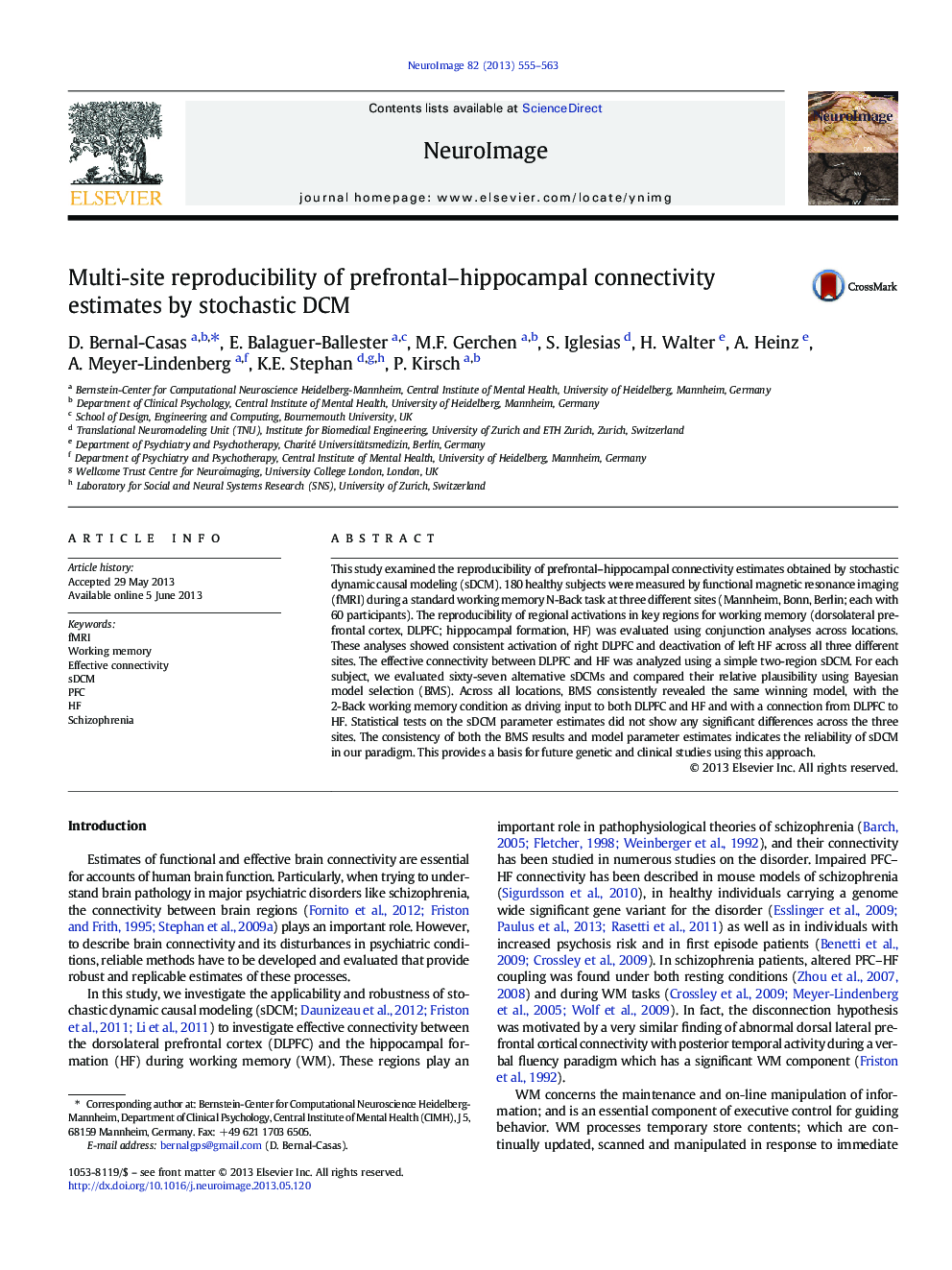| Article ID | Journal | Published Year | Pages | File Type |
|---|---|---|---|---|
| 6028997 | NeuroImage | 2013 | 9 Pages |
â¢This study examined the prefrontal-hippocampal network with sDCM.â¢Across three sites, BMS consistently revealed the same winning model.â¢Statistical tests on the sDCM parameter estimates did not show differences.â¢BMS results and model parameter estimates indicate the reliability of sDCM.â¢This reliability study provides a basis for future genetic and clinical studies.
This study examined the reproducibility of prefrontal-hippocampal connectivity estimates obtained by stochastic dynamic causal modeling (sDCM). 180 healthy subjects were measured by functional magnetic resonance imaging (fMRI) during a standard working memory N-Back task at three different sites (Mannheim, Bonn, Berlin; each with 60 participants). The reproducibility of regional activations in key regions for working memory (dorsolateral prefrontal cortex, DLPFC; hippocampal formation, HF) was evaluated using conjunction analyses across locations. These analyses showed consistent activation of right DLPFC and deactivation of left HF across all three different sites. The effective connectivity between DLPFC and HF was analyzed using a simple two-region sDCM. For each subject, we evaluated sixty-seven alternative sDCMs and compared their relative plausibility using Bayesian model selection (BMS). Across all locations, BMS consistently revealed the same winning model, with the 2-Back working memory condition as driving input to both DLPFC and HF and with a connection from DLPFC to HF. Statistical tests on the sDCM parameter estimates did not show any significant differences across the three sites. The consistency of both the BMS results and model parameter estimates indicates the reliability of sDCM in our paradigm. This provides a basis for future genetic and clinical studies using this approach.
